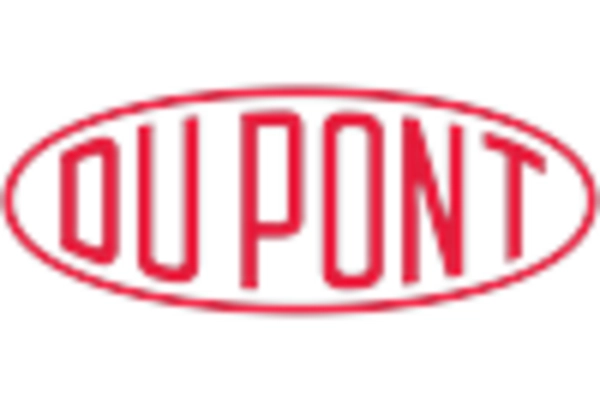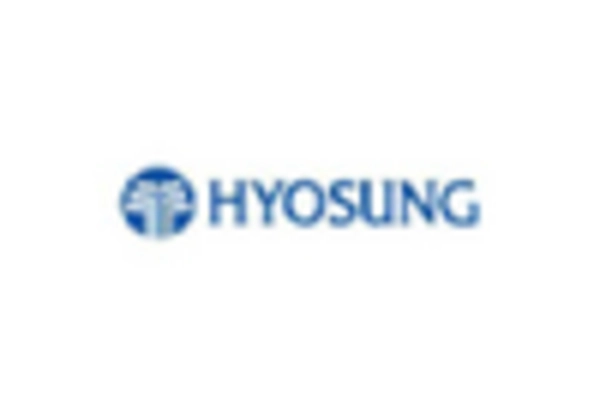Increasing Military Applications
The aramid fiber market is experiencing a notable surge in demand due to its extensive applications in military and defense sectors. Aramid fibers, known for their high strength-to-weight ratio and thermal stability, are increasingly utilized in the production of body armor, helmets, and other protective gear. The U.S. military's focus on enhancing soldier safety and performance is driving this trend. In 2025, the U.S. defense budget allocates approximately $800 billion, with a significant portion directed towards advanced materials, including aramid fibers. This investment is likely to bolster the aramid fiber market, as manufacturers strive to meet the stringent requirements for durability and protection in military applications.
Growing Demand in Construction Sector
The aramid fiber market is benefiting from the growing demand in the construction sector, where these fibers are utilized for reinforcement in composite materials. Aramid fibers enhance the tensile strength and durability of construction materials, making them ideal for applications in bridges, buildings, and other infrastructure projects. The U.S. construction industry is projected to reach $1.5 trillion by 2026, with a significant emphasis on innovative materials that improve structural integrity. This trend indicates a potential increase in the adoption of aramid fibers, as construction companies seek to leverage their unique properties for enhanced performance and longevity in their projects.
Expansion in Electrical and Electronics
The aramid fiber market is witnessing growth driven by its applications in the electrical and electronics sectors. Aramid fibers are increasingly used in insulation materials, cables, and circuit boards due to their excellent dielectric properties and thermal resistance. The U.S. electrical and electronics market is projected to reach $1 trillion by 2026, with a growing emphasis on lightweight and high-performance materials. This trend suggests a potential increase in demand for aramid fibers, as manufacturers seek to enhance the efficiency and reliability of electronic devices. The integration of aramid fibers into these applications may lead to innovations that further stimulate the aramid fiber market.
Technological Advancements in Manufacturing
The aramid fiber market is poised for growth due to ongoing technological advancements in manufacturing processes. Innovations such as improved spinning techniques and enhanced polymer formulations are enabling the production of aramid fibers with superior properties. These advancements not only enhance the performance characteristics of aramid fibers but also reduce production costs, making them more accessible to various industries. The U.S. market for advanced materials is projected to reach $150 billion by 2028, with aramid fibers playing a crucial role in this expansion. As manufacturers adopt these new technologies, the aramid fiber market is likely to experience increased competitiveness and market penetration.
Rising Focus on Personal Protective Equipment
The aramid fiber market is significantly influenced by the increasing demand for personal protective equipment (PPE). Industries such as construction, manufacturing, and healthcare are prioritizing worker safety, leading to a surge in the production of PPE made from aramid fibers. These fibers provide superior cut and heat resistance, making them ideal for gloves, suits, and other protective gear. The U.S. PPE market is expected to grow at a CAGR of 7% through 2027, indicating a robust opportunity for aramid fiber manufacturers. As companies invest in high-quality protective solutions, the aramid fiber market is likely to benefit from this heightened focus on safety and compliance.

















Leave a Comment